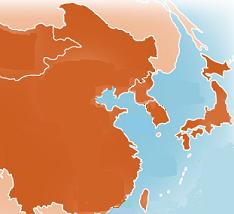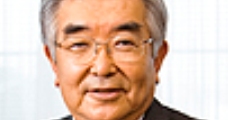North East Asia Exchange Insights
 The second day of TradeTech China held last week began with a panel of representatives from the Shenzhen Stock Exchange (SZSE), Shanghai Stock Exchange (SSE), the Taiwan Stock Exchange (TWSE) and the Tokyo Stock Exchange (TSE). The discussion in both Mandarin and English centered around how these exchanges are improving their technology and increasing connectivity to benefit traders across greater China. Lloyd Loh of the Singapore Exchange moderated.
The second day of TradeTech China held last week began with a panel of representatives from the Shenzhen Stock Exchange (SZSE), Shanghai Stock Exchange (SSE), the Taiwan Stock Exchange (TWSE) and the Tokyo Stock Exchange (TSE). The discussion in both Mandarin and English centered around how these exchanges are improving their technology and increasing connectivity to benefit traders across greater China. Lloyd Loh of the Singapore Exchange moderated.
Bai Shou the Assistant General Manager of the SSE explained how his exchange had upgraded their system and launched it successfully in November of last year after 8 years in the making. The overhaul included trader workstations, telecom servers, eternal portals and parameter engines to name a few. Testing was conducted under 100 million order scenarios with disaster situations and simulated IPO trading. The SSE is planning to implement cross border trading.
Yu Huali Director in the Computer Engineering Department at the SZSE went into more detail with respect to performance and the recent launch of the junior exchange ChiNext. The SZSE handles 10 million orders per day with round trip latency of 150 milliseconds. Not the most latency sensitive but she acknowledged that more needed to be done to improve latency and trading services. They are planning to offer collocation and facilitate more high frequency trading. She thought that the link that once existed between the SSE and SZSE could be revisited to expand arbitrage trading and improve services still. During the question period a local broker asked how the exchange was mitigating trading risk. She explained the SZSE offers real time surveillance and have a pre-event control check in place but it seemed to me that the broker should have their own risk system in place but failed to grasp that concept. Lastly, ChiNext is handling 20 million orders per day with 50 companies listed valued at RMB 180 Billion .
Ben Chen from the TWSE presented a more overall profile of the trading demographic in Taiwan. 70% of trading on the exchange was retail with the remaining being institutional flow. It was interesting to note that the small proportion in institutional trades accounted for almost 47% of traded value. DMA was only 3% of trading on the exchange which I found to be very low but access into Taiwan is cumbersome and erroneous. He also did say that short selling reform was forthcoming and they would move to a continuous trading session model.
Tomoyoshi Uranishi of the Tokyo Stock Exchange was proffering the performance improvements realized since the successful debut of Arrowhead. Since the launch total orders have increased and order sizes have decreased which is what is being observed in the more mature western exchanges. The system can process 10,000 orders per minute with order acceptance exceeding their expectations at 2 milliseconds. The collocation service boasts less than 1 millisecond round trips and data feed is seeing latencies in the 2 to 3 millisecond range as well. Currently, 94% of trading on the TSE is done by locals but with these exceptional performance gains you can expect to see more international entrants in Japan.
It was a rare treat to have these leaders of the exchange industry in north east Asia explain how they are forging ahead to deliver trading technology in a region that is increasingly in focus.
Give your opinion
Related Articles
Tokyo Stock Exchange (TSE)
-

TSE Results Of Discussion On Extension Of Trading Hours
Atsushi Saito, JPX Group CEO -Tokyo Stock Exchange, Inc. (TSE) has decided on >>
Shanghai Stock Exchange (SSE)
-

Market Highlights Of Shanghai-Hong Kong Stock Connect
Charles Li CEO HKEx - Hong Kong Exchanges and Clearing Limited on 18 >>
Shanghai Stock Exchange (SSE)
-
ISE Signs MoU With Shanghai Stock Exchange
The Irish Stock Exchange (ISE) and the Shanghai Stock Exchange (SSE) have >>




